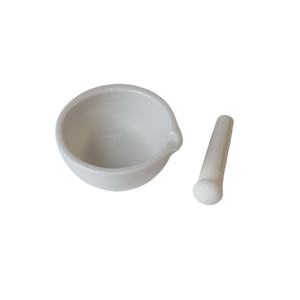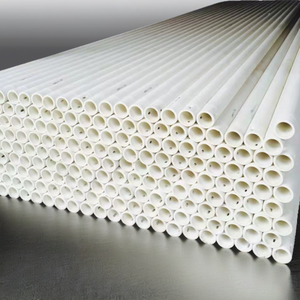1. Fundamental Structure and Structural Qualities of Quartz Ceramics
1.1 Chemical Pureness and Crystalline-to-Amorphous Shift
(Quartz Ceramics)
Quartz porcelains, also referred to as fused silica or integrated quartz, are a course of high-performance not natural materials originated from silicon dioxide (SiO TWO) in its ultra-pure, non-crystalline (amorphous) type.
Unlike conventional ceramics that rely upon polycrystalline frameworks, quartz ceramics are distinguished by their total absence of grain borders as a result of their lustrous, isotropic network of SiO four tetrahedra interconnected in a three-dimensional random network.
This amorphous framework is attained through high-temperature melting of all-natural quartz crystals or artificial silica precursors, complied with by quick cooling to avoid condensation.
The resulting product has generally over 99.9% SiO TWO, with trace impurities such as alkali steels (Na ⁺, K ⁺), aluminum, and iron maintained parts-per-million levels to protect optical clearness, electrical resistivity, and thermal performance.
The lack of long-range order gets rid of anisotropic behavior, making quartz ceramics dimensionally stable and mechanically consistent in all directions– an important benefit in precision applications.
1.2 Thermal Actions and Resistance to Thermal Shock
One of the most defining functions of quartz porcelains is their exceptionally low coefficient of thermal growth (CTE), normally around 0.55 × 10 ⁻⁶/ K between 20 ° C and 300 ° C.
This near-zero growth arises from the flexible Si– O– Si bond angles in the amorphous network, which can readjust under thermal stress without damaging, enabling the product to endure quick temperature level adjustments that would fracture conventional ceramics or metals.
Quartz porcelains can endure thermal shocks surpassing 1000 ° C, such as direct immersion in water after warming to heated temperature levels, without cracking or spalling.
This residential property makes them important in environments involving duplicated home heating and cooling cycles, such as semiconductor processing furnaces, aerospace components, and high-intensity lighting systems.
Additionally, quartz ceramics preserve structural honesty up to temperature levels of approximately 1100 ° C in continuous service, with temporary exposure resistance approaching 1600 ° C in inert environments.
( Quartz Ceramics)
Beyond thermal shock resistance, they display high softening temperatures (~ 1600 ° C )and exceptional resistance to devitrification– though long term exposure above 1200 ° C can launch surface condensation into cristobalite, which may jeopardize mechanical toughness as a result of quantity adjustments during phase changes.
2. Optical, Electrical, and Chemical Qualities of Fused Silica Equipment
2.1 Broadband Openness and Photonic Applications
Quartz porcelains are renowned for their remarkable optical transmission throughout a broad spooky range, prolonging from the deep ultraviolet (UV) at ~ 180 nm to the near-infrared (IR) at ~ 2500 nm.
This transparency is enabled by the absence of contaminations and the homogeneity of the amorphous network, which decreases light spreading and absorption.
High-purity synthetic integrated silica, produced by means of fire hydrolysis of silicon chlorides, achieves also better UV transmission and is utilized in critical applications such as excimer laser optics, photolithography lenses, and space-based telescopes.
The material’s high laser damages limit– standing up to break down under intense pulsed laser irradiation– makes it perfect for high-energy laser systems used in combination study and industrial machining.
Additionally, its reduced autofluorescence and radiation resistance make certain dependability in clinical instrumentation, consisting of spectrometers, UV treating systems, and nuclear tracking tools.
2.2 Dielectric Efficiency and Chemical Inertness
From an electrical viewpoint, quartz porcelains are exceptional insulators with quantity resistivity surpassing 10 ¹⁸ Ω · cm at area temperature and a dielectric constant of approximately 3.8 at 1 MHz.
Their reduced dielectric loss tangent (tan δ < 0.0001) makes sure very little energy dissipation in high-frequency and high-voltage applications, making them ideal for microwave windows, radar domes, and shielding substratums in electronic assemblies.
These residential or commercial properties remain stable over a wide temperature variety, unlike many polymers or standard porcelains that weaken electrically under thermal tension.
Chemically, quartz porcelains exhibit remarkable inertness to most acids, including hydrochloric, nitric, and sulfuric acids, as a result of the security of the Si– O bond.
Nonetheless, they are vulnerable to assault by hydrofluoric acid (HF) and solid antacids such as hot sodium hydroxide, which break the Si– O– Si network.
This discerning sensitivity is made use of in microfabrication processes where regulated etching of merged silica is needed.
In aggressive commercial settings– such as chemical handling, semiconductor wet benches, and high-purity fluid handling– quartz ceramics work as linings, view glasses, and activator components where contamination must be reduced.
3. Manufacturing Processes and Geometric Design of Quartz Ceramic Elements
3.1 Melting and Forming Methods
The production of quartz ceramics includes a number of specialized melting approaches, each customized to certain purity and application demands.
Electric arc melting makes use of high-purity quartz sand thawed in a water-cooled copper crucible under vacuum cleaner or inert gas, generating huge boules or tubes with exceptional thermal and mechanical homes.
Flame combination, or combustion synthesis, includes melting silicon tetrachloride (SiCl four) in a hydrogen-oxygen fire, depositing great silica bits that sinter right into a clear preform– this approach yields the greatest optical quality and is utilized for synthetic fused silica.
Plasma melting provides an alternate path, offering ultra-high temperature levels and contamination-free processing for particular niche aerospace and defense applications.
As soon as melted, quartz porcelains can be formed via accuracy casting, centrifugal forming (for tubes), or CNC machining of pre-sintered blanks.
Due to their brittleness, machining needs diamond tools and cautious control to stay clear of microcracking.
3.2 Precision Construction and Surface Finishing
Quartz ceramic parts are typically made right into intricate geometries such as crucibles, tubes, rods, windows, and custom insulators for semiconductor, photovoltaic or pv, and laser sectors.
Dimensional precision is crucial, especially in semiconductor manufacturing where quartz susceptors and bell jars must preserve accurate positioning and thermal uniformity.
Surface completing plays an important duty in performance; polished surfaces lower light scattering in optical components and lessen nucleation websites for devitrification in high-temperature applications.
Etching with buffered HF options can generate regulated surface structures or eliminate harmed layers after machining.
For ultra-high vacuum cleaner (UHV) systems, quartz porcelains are cleaned up and baked to get rid of surface-adsorbed gases, making sure marginal outgassing and compatibility with sensitive procedures like molecular beam epitaxy (MBE).
4. Industrial and Scientific Applications of Quartz Ceramics
4.1 Role in Semiconductor and Photovoltaic Production
Quartz porcelains are foundational materials in the fabrication of incorporated circuits and solar cells, where they serve as furnace tubes, wafer boats (susceptors), and diffusion chambers.
Their capability to stand up to high temperatures in oxidizing, decreasing, or inert ambiences– combined with reduced metal contamination– makes sure process pureness and return.
Throughout chemical vapor deposition (CVD) or thermal oxidation, quartz components keep dimensional security and stand up to bending, stopping wafer damage and imbalance.
In solar production, quartz crucibles are made use of to grow monocrystalline silicon ingots via the Czochralski process, where their purity directly influences the electric quality of the final solar batteries.
4.2 Usage in Illumination, Aerospace, and Analytical Instrumentation
In high-intensity discharge (HID) lamps and UV sanitation systems, quartz ceramic envelopes contain plasma arcs at temperatures exceeding 1000 ° C while transmitting UV and visible light efficiently.
Their thermal shock resistance stops failure during quick lamp ignition and shutdown cycles.
In aerospace, quartz ceramics are made use of in radar windows, sensor housings, and thermal protection systems as a result of their reduced dielectric constant, high strength-to-density proportion, and security under aerothermal loading.
In analytical chemistry and life sciences, integrated silica blood vessels are crucial in gas chromatography (GC) and capillary electrophoresis (CE), where surface area inertness avoids sample adsorption and guarantees accurate separation.
Additionally, quartz crystal microbalances (QCMs), which rely on the piezoelectric residential or commercial properties of crystalline quartz (distinctive from fused silica), make use of quartz ceramics as safety real estates and insulating assistances in real-time mass sensing applications.
Finally, quartz porcelains represent a special junction of extreme thermal durability, optical openness, and chemical pureness.
Their amorphous framework and high SiO two content allow performance in settings where standard materials fail, from the heart of semiconductor fabs to the side of area.
As innovation developments towards higher temperature levels, higher precision, and cleaner procedures, quartz ceramics will certainly remain to act as a vital enabler of development throughout science and sector.
Distributor
Advanced Ceramics founded on October 17, 2012, is a high-tech enterprise committed to the research and development, production, processing, sales and technical services of ceramic relative materials and products. Our products includes but not limited to Boron Carbide Ceramic Products, Boron Nitride Ceramic Products, Silicon Carbide Ceramic Products, Silicon Nitride Ceramic Products, Zirconium Dioxide Ceramic Products, etc. If you are interested, please feel free to contact us.(nanotrun@yahoo.com)
Tags: Quartz Ceramics, ceramic dish, ceramic piping
All articles and pictures are from the Internet. If there are any copyright issues, please contact us in time to delete.
Inquiry us

